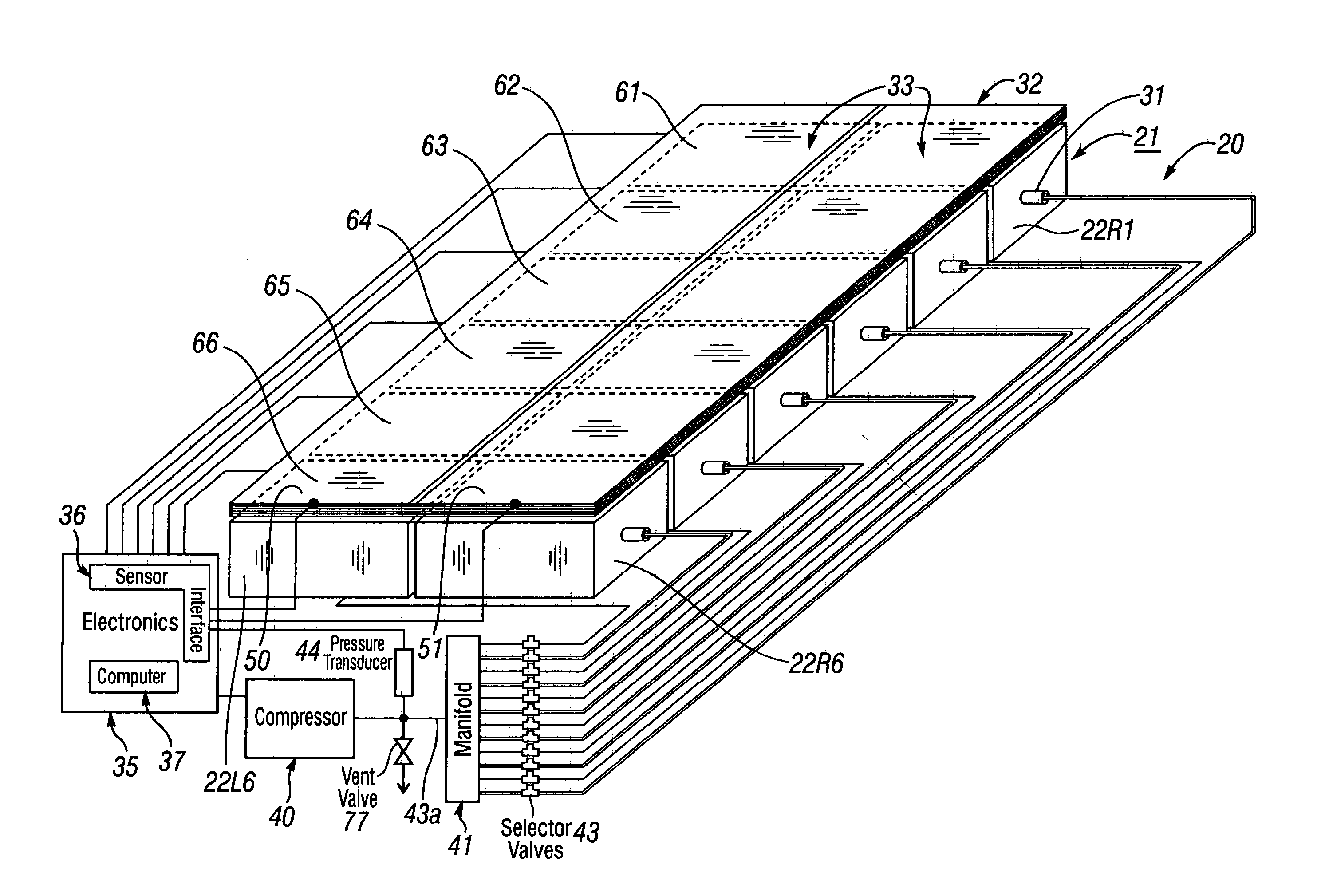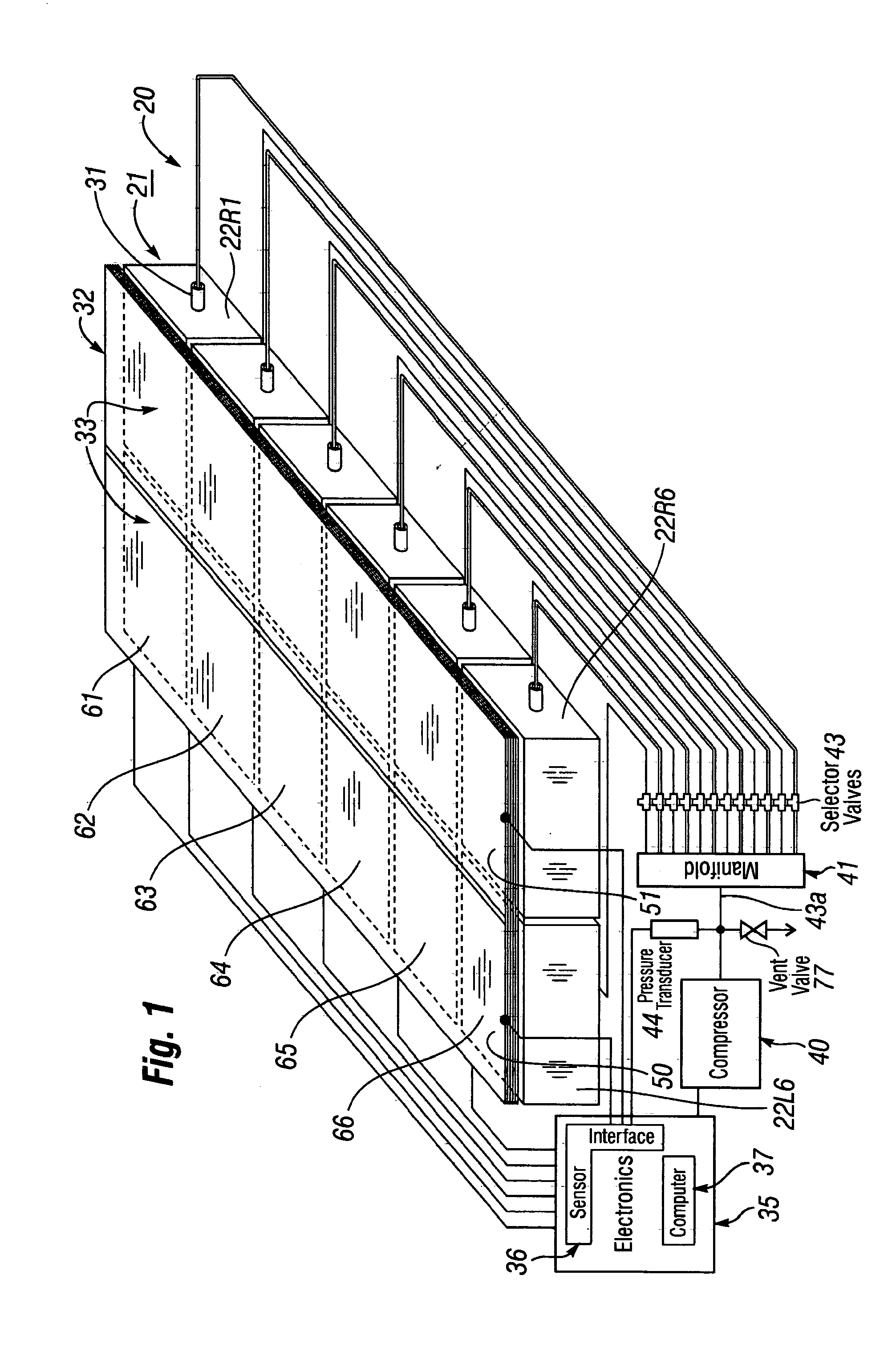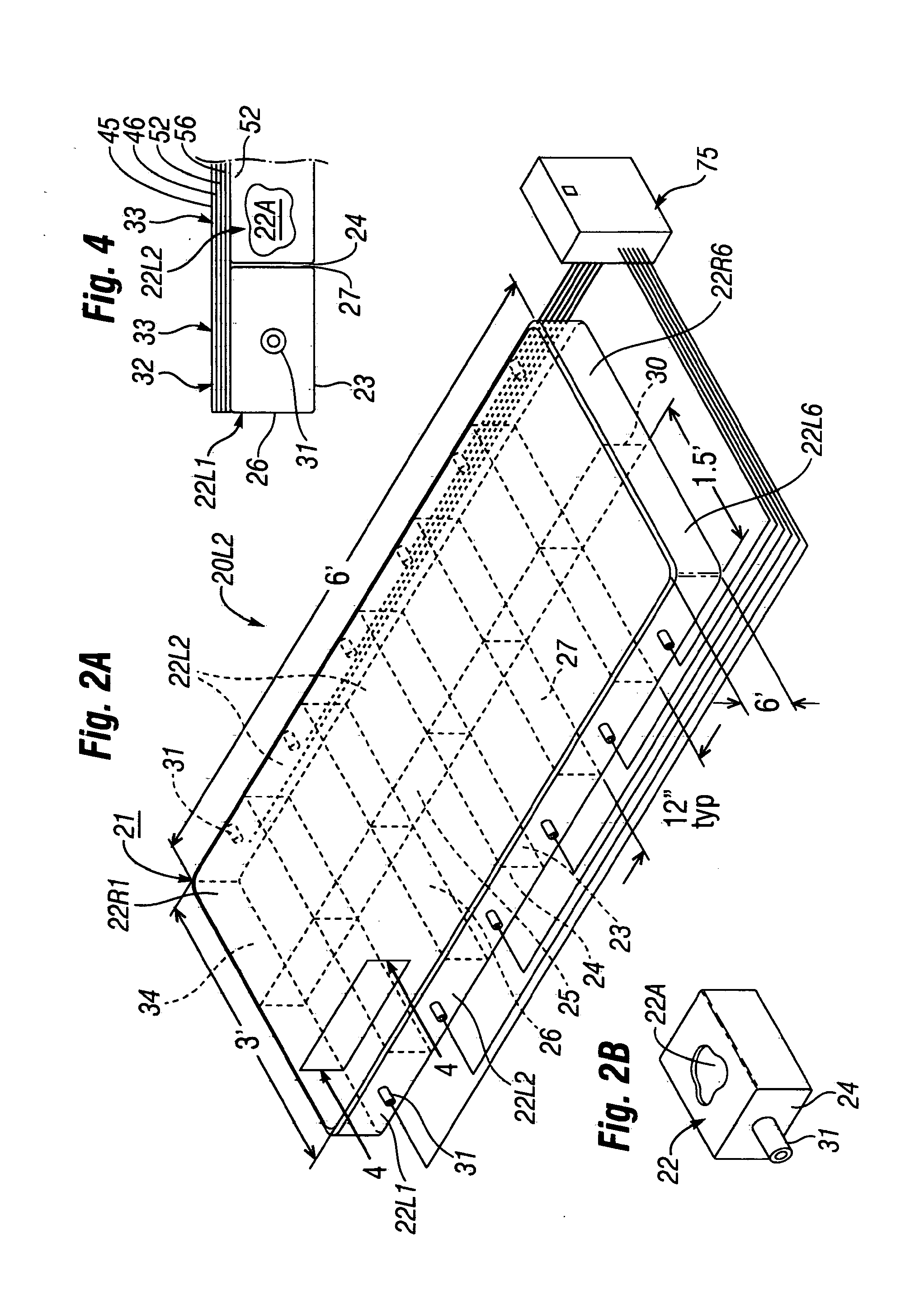Adaptive cushion method and apparatus for minimizing force concentrations on a human body
a technology of adaptive cushion and force concentration, which is applied in the field of adaptive cushion method and apparatus for minimizing force concentration on supported body parts, can solve the problems of affecting tissue damage, causing damage to tissues, and generating damagingly large shear stresses on internal tissues, so as to minimize reaction forces
- Summary
- Abstract
- Description
- Claims
- Application Information
AI Technical Summary
Benefits of technology
Problems solved by technology
Method used
Image
Examples
example i
[0101 for forces in the range of 0 to 30 psi:
[0102]200 ml of acrylic binder
[0103]10 ml of nickel flake powder
[0104]10 ml of graphite powder
[0105]20 ml of carbon black
[0106]Example II for forces in the range of 0-100 psi
[0107]200 ml of acrylic binder
[0108]5 ml of nickel flake powder
[0109]5 ml of graphite powder
[0110]30 ml of carbon black
example iii
[0111 for forces in the range of 0-1000 psi
[0112]200 ml of acrylic binder
[0113]1 ml of nickel flake powder
[0114]1 ml of graphite powder
[0115]40 ml of carbon black
The fabric matrix for piezoresistive sheet 52 is submerged in the piezoresistive coating mixture. Excess material is rolled off and the sheet is hung and allowed to air dry.
[0116]FIG. 6 illustrates calculation of a minimum spacing S between adjacent air bladder cells 22, and a minimum width of non-conductive strip 49 between adjacent conductors of sensor array 32.
[0117]Referring to FIG. 6, as a patient sinks into a deflating bladder 22, the upper force sensor layer 33 is drawn down and away from the bladder over which it was initially positioned. If the non-conductive strip 49 is too narrow, there is a possibility that the conductive portion will overlay the deflating bladder and, thus register forces that are not representative of the force over the bladder in which it was originally positioned. It is therefore necessary t...
PUM
 Login to View More
Login to View More Abstract
Description
Claims
Application Information
 Login to View More
Login to View More - R&D
- Intellectual Property
- Life Sciences
- Materials
- Tech Scout
- Unparalleled Data Quality
- Higher Quality Content
- 60% Fewer Hallucinations
Browse by: Latest US Patents, China's latest patents, Technical Efficacy Thesaurus, Application Domain, Technology Topic, Popular Technical Reports.
© 2025 PatSnap. All rights reserved.Legal|Privacy policy|Modern Slavery Act Transparency Statement|Sitemap|About US| Contact US: help@patsnap.com



